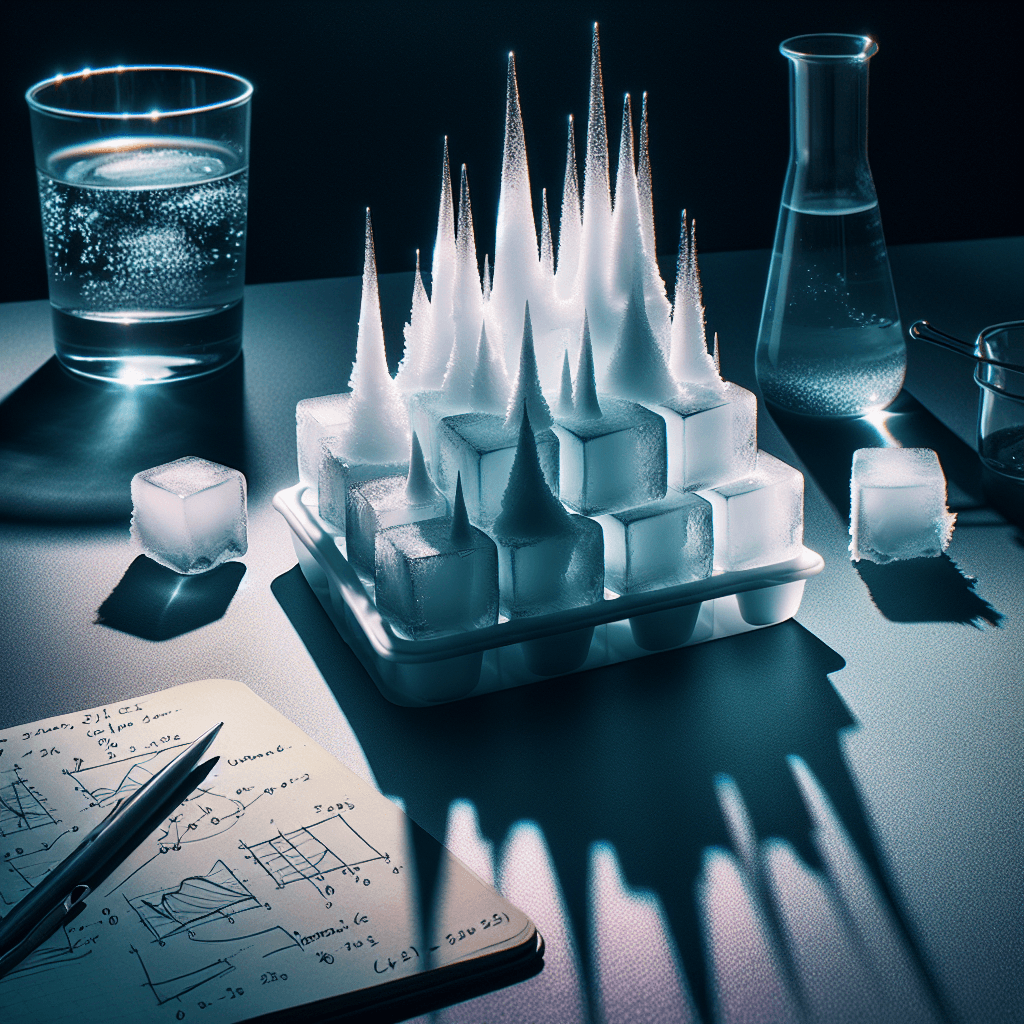Why do ice cubes sometimes form a weird spike on top
That strange, sharp spike on your ice cube isn't a freezer glitch—it's the fascinating result of a miniature volcanic eruption happening in slow motion.


Too Long; Didn't Read
Ice freezes from the outside in. The expanding water in the middle is forced up through a small hole in the surface, creating a spike as it freezes.
Kitchen Science Mystery: Solving Why Ice Cubes Sometimes Form a Weird Spike on Top?
Have you ever reached into your freezer for some ice, only to discover a bizarre, gravity-defying spike growing out of the top of a cube? It looks like a tiny, crystal-clear stalagmite pointing towards the freezer light. Your first thought might be that something is wrong with your freezer or your water. But rest assured, this strange phenomenon is not a sign of a malfunction. It's a fascinating and perfectly natural quirk of physics known as an "ice spike" or "ice spicule." This post will demystify this icy enigma, exploring the precise science behind how and why these peculiar structures form in your ice cube tray.
The Science of Freezing: More Than Meets the Eye
To understand how an ice spike grows, we first need to review how water freezes. Unlike most substances that contract and become denser when they solidify, water does something special. As it cools, it reaches its maximum density at about 4°C (39°F). Below this temperature, as it turns into ice, its molecules arrange themselves into a rigid crystal lattice, taking up about 9% more space. This expansion is why pipes can burst in the winter and a can of soda will explode if left in the freezer.
This process of freezing in an ice cube tray typically happens from the outside in. The cold air in the freezer cools the top, sides, and bottom of the tray, causing a shell of ice to form while the water in the center remains liquid.
The Birth of an Ice Spike: A Step-by-Step Eruption
The formation of an ice spike is a delicate process that requires a specific set of conditions to align perfectly. Think of it as a tiny, slow-motion volcanic eruption.
Step 1: An Icy Shell Forms
As the water in your ice cube tray cools, the surface freezes over first, along with the sides and bottom. This creates a solid ice "lid" on top of a pocket of still-liquid water. Critically, this shell is almost completely sealed, but a small hole or weak point often remains in the surface, which is the last part to freeze.
Step 2: The Pressure Builds
As the liquid water trapped beneath the ice shell continues to cool and freeze, it expands. Since it's trapped within a solid container of ice, this expansion has nowhere to go. This creates a tremendous amount of pressure, pushing on both the liquid water and the ice shell containing it.
Step 3: Water Finds an Escape Route
The mounting pressure seeks the path of least resistance. It finds that tiny, unfrozen hole or weak spot in the surface ice. The pressurized liquid water is then forced upwards through this opening.
Step 4: A Spire of Ice Grows
As the water squeezes out of the hole into the frigid freezer air, it freezes around the rim of the opening. This process continues, with more water being pushed up from below and freezing in successive layers. This builds a hollow tube or spike of ice that grows upward, continuing until all the water inside the cube is frozen solid, cutting off the supply. The final shape can be a sharp spike, a triangular pyramid, or even a hollow tube.
The Perfect Conditions for an Icy Spike
If this process is so straightforward, why doesn't every ice cube grow a spike? The formation depends on a few key factors, which is why it’s a relatively rare sight.
- Water Purity: Spikes are far more likely to form when using distilled or purified water. Tap water contains dissolved minerals and impurities that can disrupt the formation of a uniform ice crystal shell. These impurities provide multiple "nucleation sites" where ice can begin to form, preventing the creation of a single, solid shell needed to build pressure.
- Freezing Rate: The temperature and rate of freezing must be just right. If the water freezes too quickly, a stable shell and pressure system doesn't have time to form. If it freezes too slowly, the small hole on the surface will likely freeze shut before a spike has a chance to grow.
- Air Circulation: Modern "no-frost" freezers that circulate air with a fan can sometimes prevent spike formation. The moving air can cause the surface to freeze in an uneven, rippled pattern, which doesn't create the perfect seal needed for the phenomenon.
Conclusion
The next time you discover a curious ice spike in your freezer, you'll know it's not a mystery but a beautiful demonstration of water's unique properties. It's the simple result of water freezing from the outside in, expanding as it solidifies, building up pressure, and forcing the remaining liquid through a small opening to create an incredible natural sculpture. This fascinating process reminds us that even in the most mundane corners of our homes, like an ice cube tray, a little bit of scientific wonder is always waiting to be discovered. Want to see it for yourself? Try filling a tray with distilled water and see if you can cultivate your own garden of ice spikes.
More Articles

Why do movie punches sound so much crunchier and louder than real ones?
That sickening, bone-crunching punch you hear in the movies is a lie, and the secret ingredient is probably sitting in your refrigerator right now.

What makes a beer bottle suddenly foam over just from a light tap on top?
It’s not magic, it’s a shockwave; discover the explosive physics that turns a gentle tap on your beer bottle into an instant foamy geyser.

Why do police officers touch the back of a car during a traffic stop?
It’s not a random habit; that simple touch is a calculated, old-school tactic designed to leave a crucial and potentially life-saving piece of evidence behind.